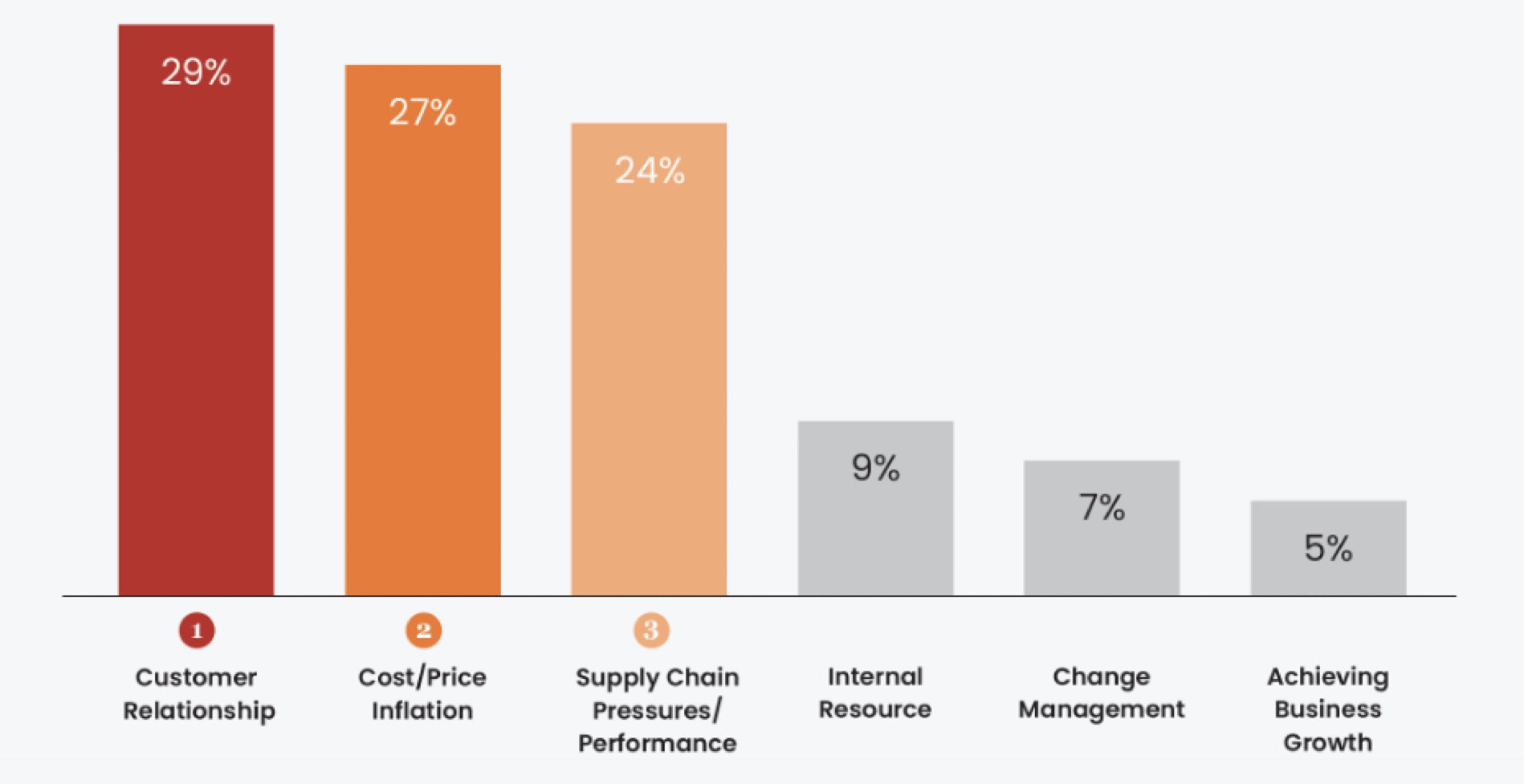Despite Unprecedented B2B Challenges In 2022, The Opportunity Exists To Improve Customer Relationships
We recently asked a number of our B2B senior customer contacts to tell us about the main challenges that they and their businesses faced in 2022. What follows are the top three challenges that dominated the results and how you can not only navigate these issues successfully, but improve your customer relationships along the way.
The top three B2B industry challenges in 2022:
Customer relationship management. This issue broke down into 2 categories: how to re-establish ‘customer intimacy’ now that things are ‘returning to normal after the Covid period’, and how to maintain ‘good’ customer relationships against a backdrop of frequent price increases and a volatile supply chain environment. One client said: “this period of uncertainty increases the need for us to stay in close contact with our customers and to develop a deep understanding of their expectations.” More bluntly, another said: “our focus is on repairing some of the damage done to our customer relationships over the last 12 months.”
Unprecedented cost/price inflation is an emerging concern across the industry sectors covered by this survey. Most top of mind were concerns about managing price increase discussions effectively as well as anxiety around the impact of input costs on company margins. One client said: “how to manage customer contracts so that they deliver an acceptable profit during a period of unprecedented inflation is a huge challenge.”
Ongoing supply chain pressures, as they have been throughout the last 18-24 months, remain a major headache, although there is some evidence of weakening demand alleviating some of the pressure in some sectors since the beginning of the year. Many talked about the need for more flexible supply platforms and closer, more integrated, demand planning processes.
The opportunity now is to really focus on relationships:
We all try to “listen” but are we actually hearing? Ensure you not only listen, but hear your customers and understand what they really think and need from you. Due to the pandemic there has been less face-to-face contact and therefore fewer opportunities to simply have an “informal chat.” Make it a priority to get regular customer feedback and to act on it. Of course, if you currently do not have a robust customer survey mechanism in place that measures the health of your relationships down to the individual level, then now is the time. You can’t manage your relationships if you don’t know where you stand.
Set clear expectations: It’s very important to get in front of these issues before they can affect your relationships. We have clear evidence that how a customer feels about your company determines how they will react to everyday issues. So, if you have difficult messages to deliver, then focus on setting clear expectations and communicating these effectively, and then deliver against these. That way, even if your customer doesn’t like the message, they will respect your openness and professionalism.
Show empathy: Your customers may be hurting right now and if you are not communicating with them regularly or acting on feedback, they may perceive that you don’t care. Our data tells us a lack of communication is one of the main drivers of customer dissatisfaction. Check in with your customers, ask them to talk about their issues, probe on ways they may need your further support. Your customers will perceive your willingness to listen and look for solutions as evidence you are a true partner and not simply a vendor or supplier.
Demonstrate proactivity: If the acute issue with your customer is inflation, then proactively look for ways to save costs/resources, even if the results are modest. Gestures are important. Demonstrate that you are trying to maximise value for the customer. In our survey data with thousands of customers, we see customers raise more issues with how manufacturers respond to these issues than we do about the issues themselves – so show you care by taking the initiative.
We hope these insights help you to navigate a difficult marketplace and, along the way, improve your customer relationships.
To learn more about our unique client relationship survey methodology, please request a short demo below. And join our email list to receive our “Relationship Matters” quarterly newsletter filled with articles like this one.


